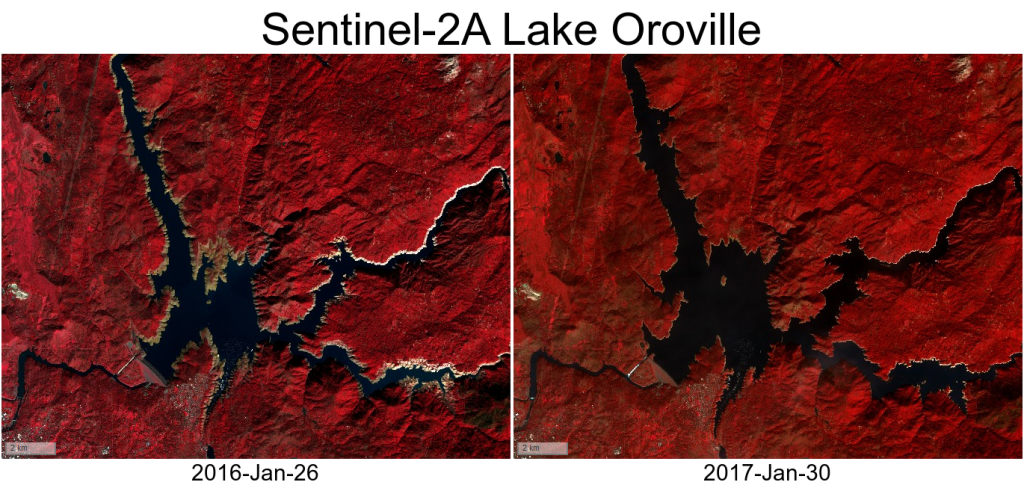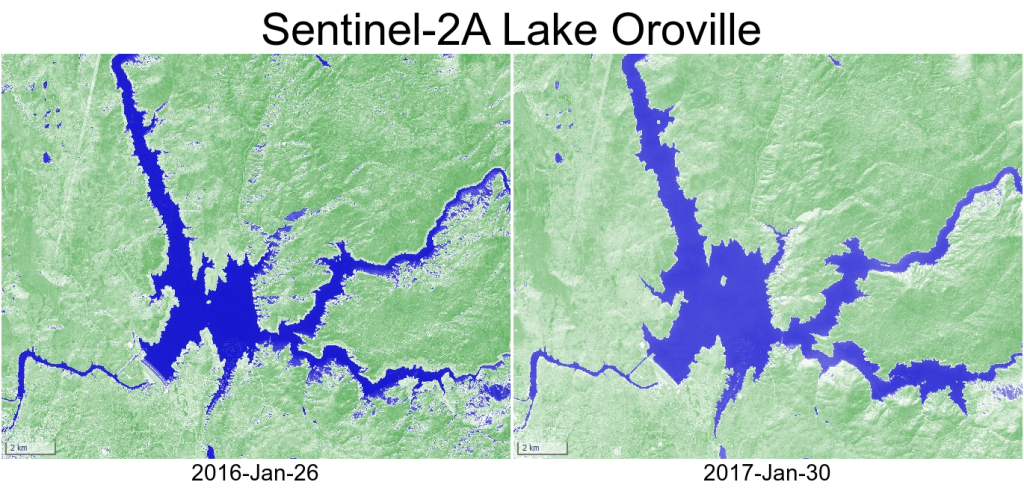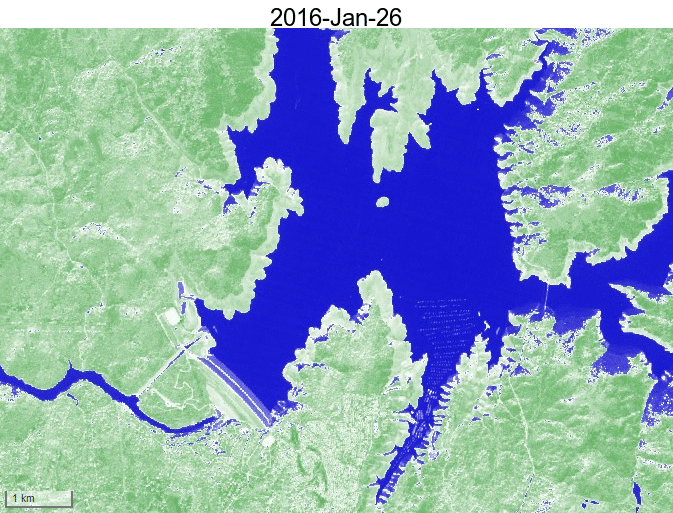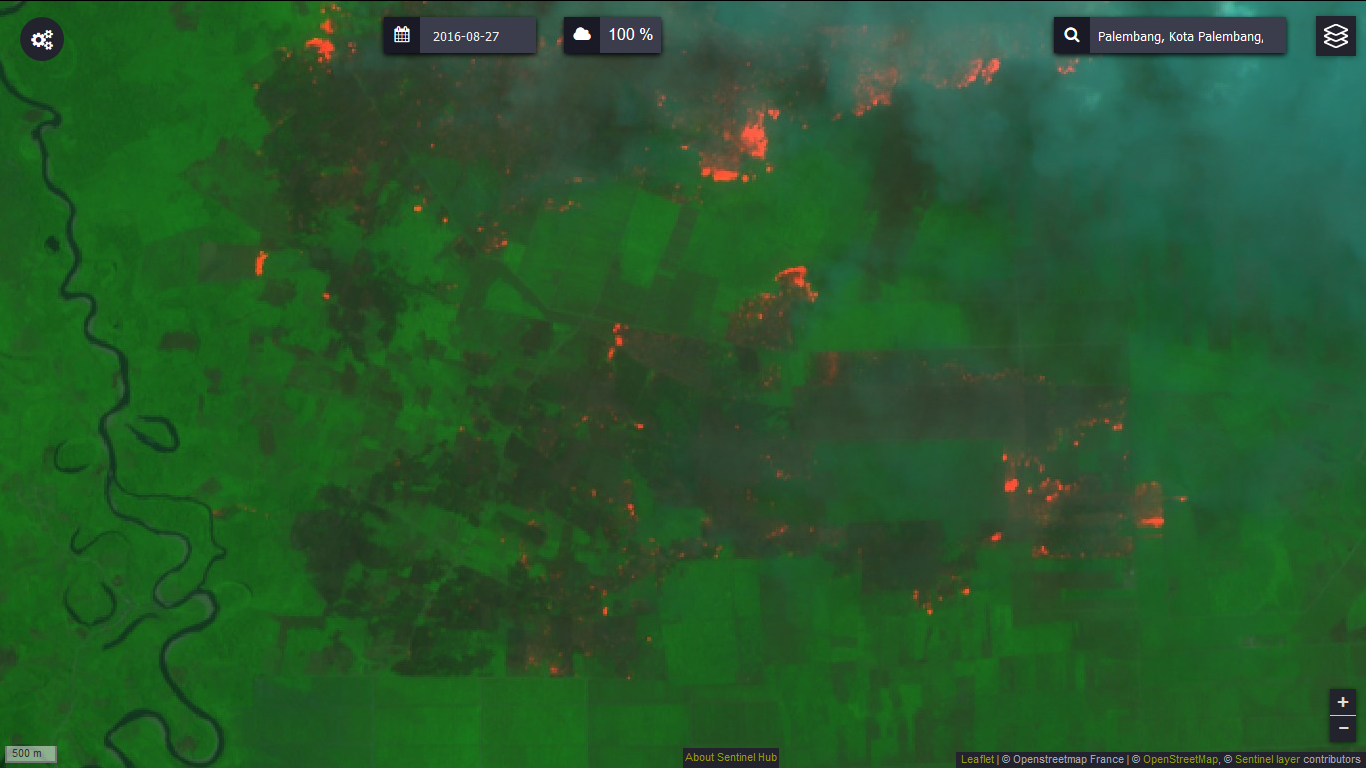Lake Oroville in January 2016 vs. 2017
While California has just started to emerge from its worst drought in 1,200 years (2011-2016), it is now being hit by severe rainfalls, causing the evacuation of 188’000 northern California residents under the threat of spillway failure at Oroville Dam.
The Sentinel-2 mission began to monitor the western USA in 2016, so we can make an image comparison of the Lake Oroville in January 2016 (after five years of drought) and 2017 (after the heavy rainfalls). Here I used the NIR color composition (B8/B4/B3) in the Sentinel-Playground the highlight the contrast between the water and the vegetation surfaces.
As explained in this previous post, the normalized difference water index (NDWI) enables to better detect the lake extent.
Here the NDWI is computed from level-1 images (top of the atmopshere reflectances). We can see that the water mask derived from the NDWI is not perfect in this mountainous region, as shaded (north-facing) slopes also have high NDWI values and can be confused with water surfaces. A better result could probably be achieved with level-2 images (top of canopy, flat surface reflectances).











